Everglades National Park in Florida is one of the most beautiful national parks in the United States of America. This incredible park features a wide variety of habitats, providing homes to a diverse array of flora and fauna. In fact, the plants and animals that live at the Everglades are so diverse that the park has earned the status of a World Heritage Site. It’s a globally known, and absolutely stunning, park. Whether you’re a bird-watcher, fisherman, or plant nerd, you’re sure to find some epic stuff to look at as you stroll the Everglades.
The process of earning the park’s status as a national park was a bit treacherous, but on December 6, 1947, the park was officially designated. Now, over a million visitors are estimated to check out this beautiful park each year. With a southern Florida location, the Everglades are a beautiful spot to escape the winter chill. Whether you’re a national park bagger or a fan of crocs and alligators, consider taking a trip to this beautiful park. If you’re heading to the area soon, read on to discover more about Everglades National Park below.
1. A lot of endangered and threatened species live at Everglades National Park.

Two primary threats to Florida panthers are poaching and habitat fragmentation.
©iStock.com/fotoguy22
Everglades National Park is a safe haven for a long list of endangered and threatened species. In fact, thirteen endangered species and ten threatened species find their homes within the park. One of the best-known endangered species in Everglades National Park is the Florida panther. These are the most endangered cats in North America, with just over 200 panthers left in the wild. These 200 cats find their home in Everglades, as well as Big Cypress National Preserve.
There are quite a few endangered birds living in Everglades National Park, including the ivory-billed woodpecker, the red-cockaded woodpecker, and Bachman’s warbler. The West Indian manatee, a threatened mammal living in the waters of the park, has its critical habitat in the park. That means Everglades National Park is vital to the restoration of the species. There are plenty of other animals in the Everglades with a critical habitat there, including butterflies, turtles, and crocodiles.
2. Everglades National Park is the only subtropical reserve on the continent of North America.
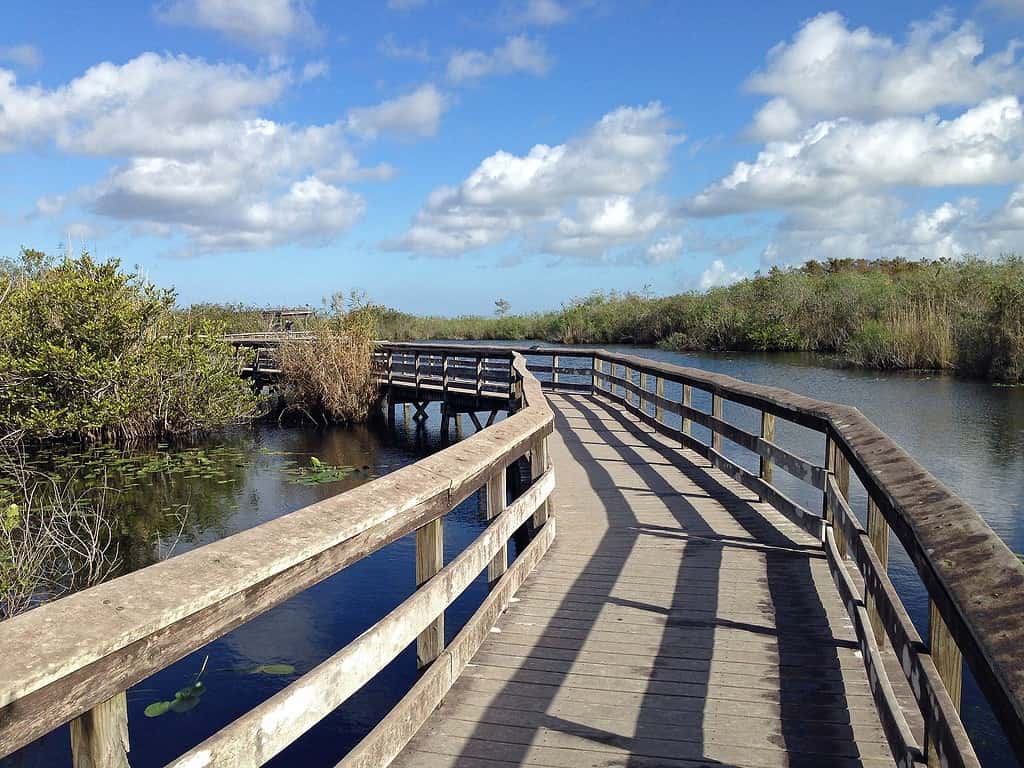
Everglades National Park only has two seasons: the wet season and the dry season!
The United States is home to a long list of national and state parks, refuges, and reservations. In fact, there are 588 wildlife refuges in the country! However, Everglades National Park is the only subtropical reserve on the entire continent of North America. The United States alone contains five different climate regions, with only small portions of both subtropic and tropical regions. Hawaii and Florida are the only states with regions of tropicality. However, the Everglades National Park is located in the subtropical region.
The difference between subtropical and tropical regions is fairly nuanced. Subtropical regions have seen freezing temperatures no less than once in the last thirty years, whereas tropical regions haven’t seen frozen temperatures in over thirty years. However, large portions of the rest of the continent have tropical climates. All that said, the Everglades National Park is the only reserve in the subtropical region in all of North America.
3. Alligators and crocodiles both live in Everglades National Park.
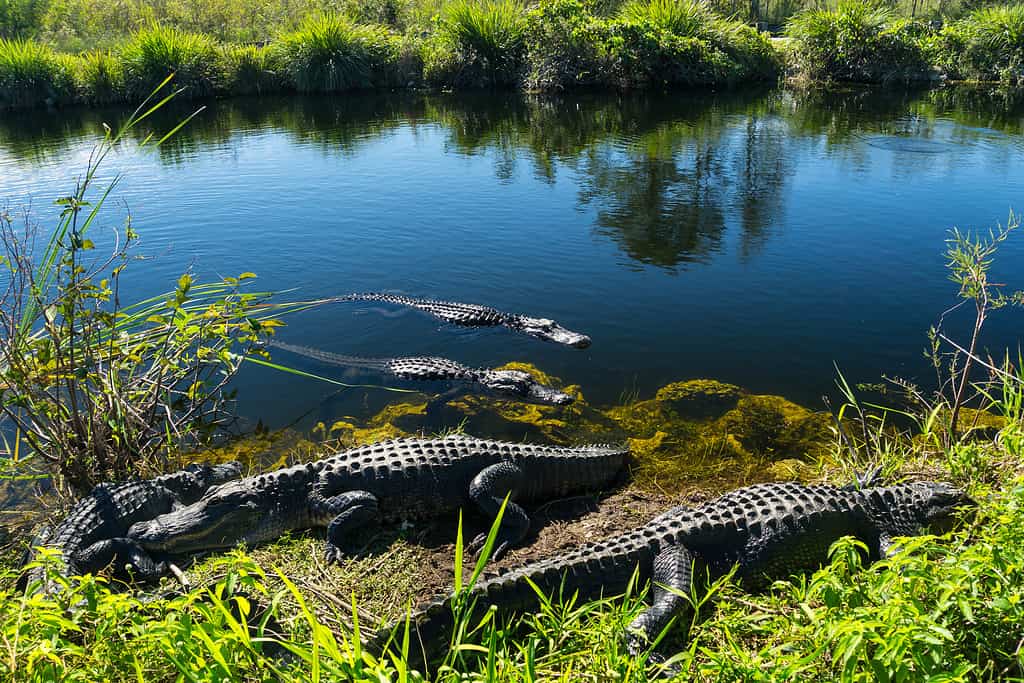
Alligators are common in the United States, with over 3 million found in the country. However, American crocodiles are an endangered species. In fact, less than 2,000 crocodiles reside in the United States.
©Simon Dux/iStock via Getty Images
Not only is it special that they both live there, but it’s actually the only place in the world where the two creatures coexist. Crocodiles generally have a preference for saltwater, while alligators generally prefer freshwater. However, both of these types of habitats can be found in Everglades National Park. That means these two species can exist in closer contact than anywhere else on Earth.
If you’re not a huge animal person, you may not appreciate all the differences between crocodiles and alligators. Both species are intimidating animals, but they have some key differences. First and foremost, they have some substantial physical differences. Alligators are most often smaller than crocodiles. They also have a U-shaped snout, whereas crocs have a V-shaped snout. Additionally, their coloration is a bit different, with alligators having dark green or black skin while crocodiles have olive green or light brown skin.
4. The Everglades are an important source of drinking water.
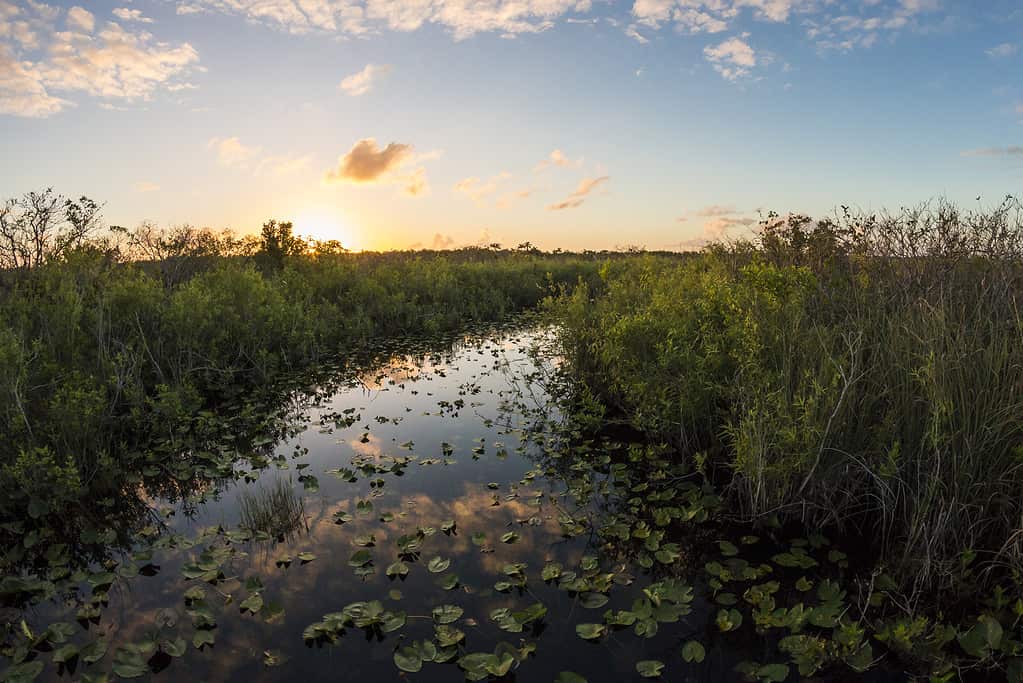
The river flowing through the Everglades is actually called the River of Grass. Much of the water is grassy, so the name is a bit obvious.
©BlueBarronPhoto/iStock via Getty Images
When most people picture the Everglades, they imagine a swampy, squishy, muddy marsh. While some of the wetland is like that, the water from the Everglades is actually an important source of hydration for Floridians. In fact, 1/3 of the residents of Florida consume water from the Everglades! This water gets naturally filtered throughout its path from Big Cypress National Preserve to the Everglades. Then it’s used to hydrate 8 million Florida residents.
At the end of the water’s path, it hits the Biscayne Aquifer. A natural filtration process takes place at the aquifer that leaves the water suitable for drinking. The amount of water pouring into the aquifer is what keeps it in good shape. Aquifers are susceptible to salt contamination and, of course, drought. The river in the Everglades is an important resource to southern Florida.
5. Everglades National Park is gigantic.
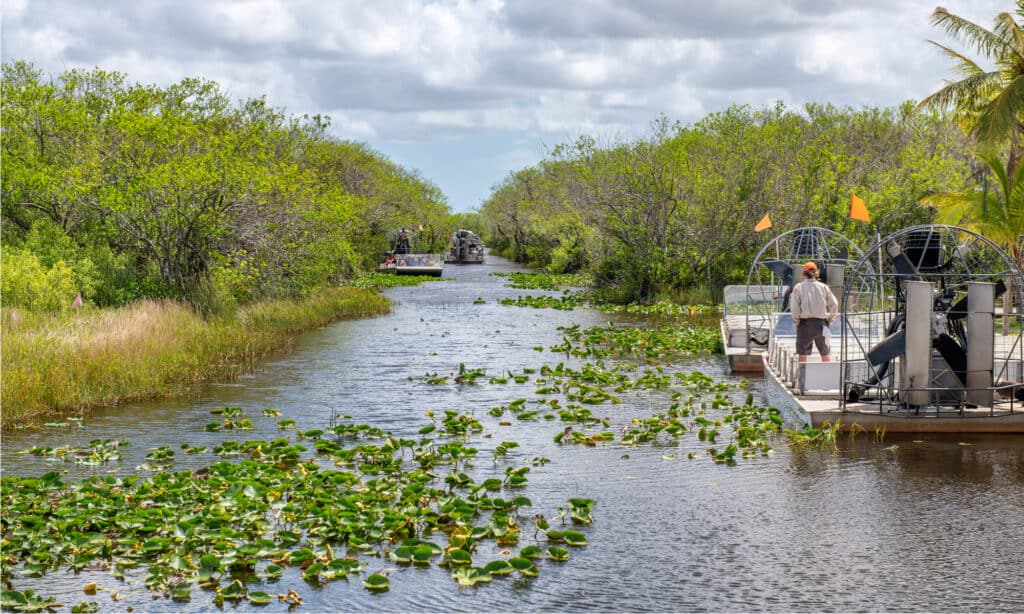
The wetlands of the Everglades are shrinking as developments take place in southern Florida. While 1.5 million acres are federally protected, the habitats of the region once expanded far beyond the territory legally designated as the national park.
©GagliardiPhotography/Shutterstock.com
Everglades National Park is an astonishing size. In fact, it’s the tenth-largest national park in all of the United States! It spans an epic 1,508,938 acres. The largest national park in the US is Wrangell St. Elias National Park in Alaska, which is over 13 million acres in size! If only the 48 contiguous states are included in the count, Everglades is the third-largest national park in America.
On December 6, 1947, over 1.5 million acres were designated as official national park land. However, prior to its official designation, the park was significantly bigger. Before becoming a national park, the Everglades was a region of south Florida spanning from Lake Okeechobee all the way down to the tip of Florida’s peninsula. This region, then, stretched for over 2.5 million acres.
6. Despite its massive size, there aren’t too many hiking trails at the park.
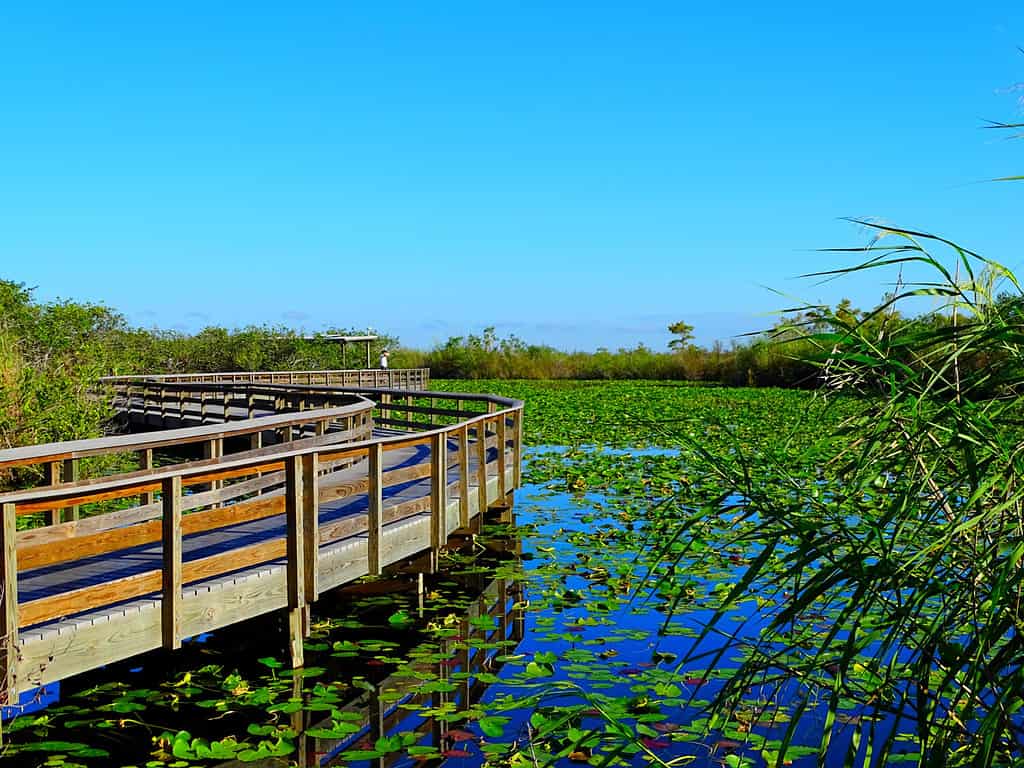
The
Anhinga Trai
l is one of the most commonly traversed walks at Everglades National Park. It’s under a mile long, but takes you around some of the most beautiful spots in the park! This hike is perfect for families with little ones getting out into nature.
©GIBAN/Shutterstock.com
While Everglades National Park is one of the most massive parks in America, it’s strangely unfit for hiking. There are a lot of places to explore, but the park offers less than three dozen official hiking trails, many of which are fairly short. However, there are a few great options for exploring the park that don’t include trekking on foot.
Tour boats and kayaks are two common options for getting out on the water at Everglades National Park. Taking a guided tour around the region is a great way to learn more about the plants and animals that inhabit the park. You may get up close and personal with some animals you’ve never before seen in the wild! The rangers at Everglades are equipped to answer all your questions and keep you safe amidst crocodiles, alligators, panthers, and more.
7. Fire is good for Everglades National Park.
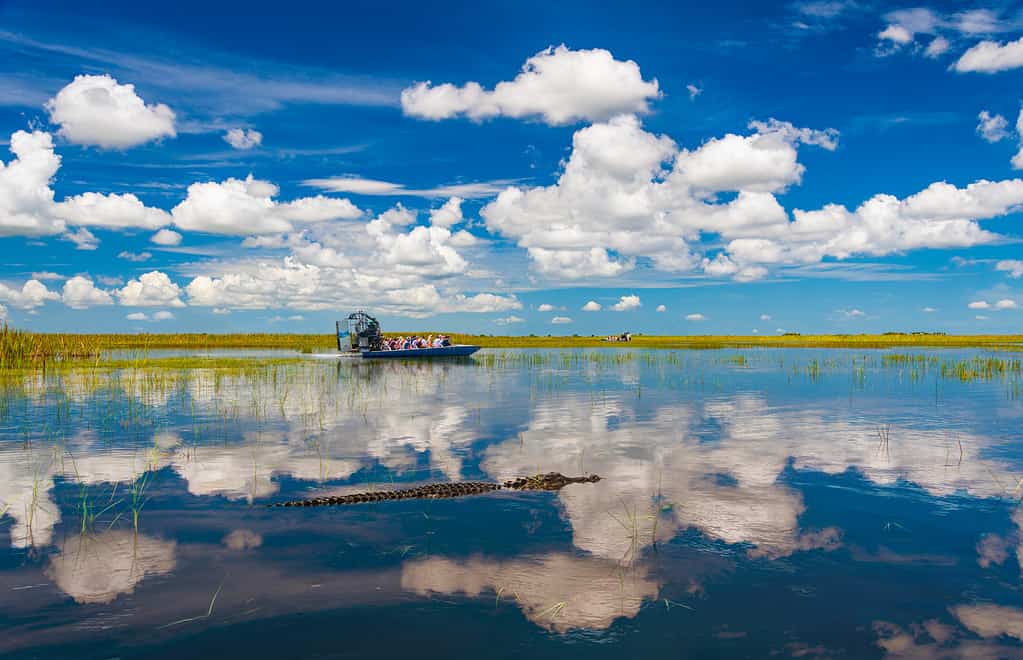
December through April makes up the majority of the dry season in the park, while the wet season occurs during the summer and early fall.
©allouphoto/Shutterstock.com
As explained above, there are only two seasons at Everglades National Park: the dry season and the wet season! During the wet season, there is significant rainfall, but the dry season often creates a drought for the region. When there’s a drought taking place in the Everglades, it’s common for fires to burn through some of the park.
But don’t worry! These fires actually serve a really important purpose to the Everglades. Natural fires help to clear out plants that have accumulated and often block the flow of the water. These fires can start from lightning strikes, or through the park’s prescribed burn programs that exist to facilitate helpful fires.
8. The park is being invaded by snakes!

Alligators, which can be found in the Everglades, are a natural predator of
Burmese
pythons.
©dwi putra stock/Shutterstock.com
While the Everglades are home to a long list of interesting species, there are also a few invasive pests at the park. Most notable is the Burmese python. These pythons find their natural habitat in Africa and Asia, but they made their way over to Florida in the late 1900s as pets. However, enough escaped to create a python crisis in the Everglades!
They’re sneaky creatures that are difficult to spot, but scientists believe there are tens of thousands of pythons preying within Florida, many within the boundaries of the Everglades. Their presence has had a big impact on the health of quite a few different mammal species. Each year, the park holds a python hunt where volunteers learn how to spot and humanly kill these invasive pests. Apparently, the python hunts have successfully eradicated over 3,000 pythons.
9. Everglades National Park was a set for a 1960s TV show!
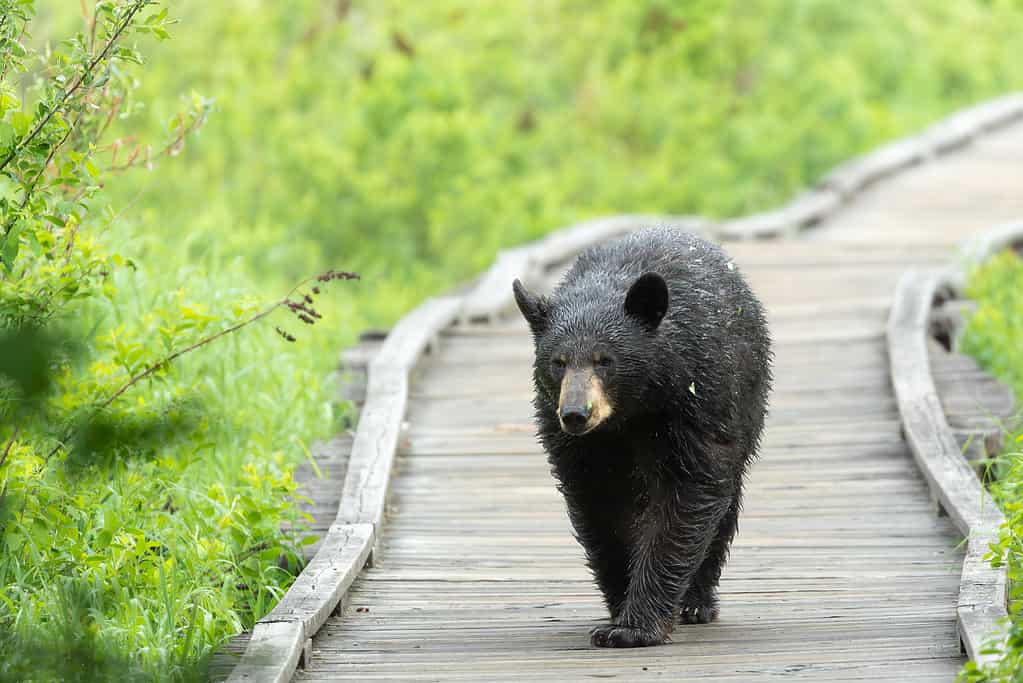
was a
black bear
. A few different black bears were used to make the program, but the most famous was Bruno the Bear.
©Greg Norgaard /iStock / Getty Images Plus via Getty Images
Admittedly, lots of shows and movies have been filmed within the bounds of Everglade National Park. It’s a beautiful and unique backdrop for all types of stories. However, one of the first productions shot at the Everglades was the show Gentle Ben. Gentle Ben was filmed from 1967-1969, and included the tale of a family and their pet bear!
Everglades National Park has also been featured on The Amazing Race, a reality competition show taking travelers all around the world. There have also been quite a few documentaries produced about the region, including The Everglades – A Subtropical Paradise. Long story short, there are lots of ways to witness the beauty of the park without visiting yourself!
10. Everglades National Park holds a record for protected mangrove trees.
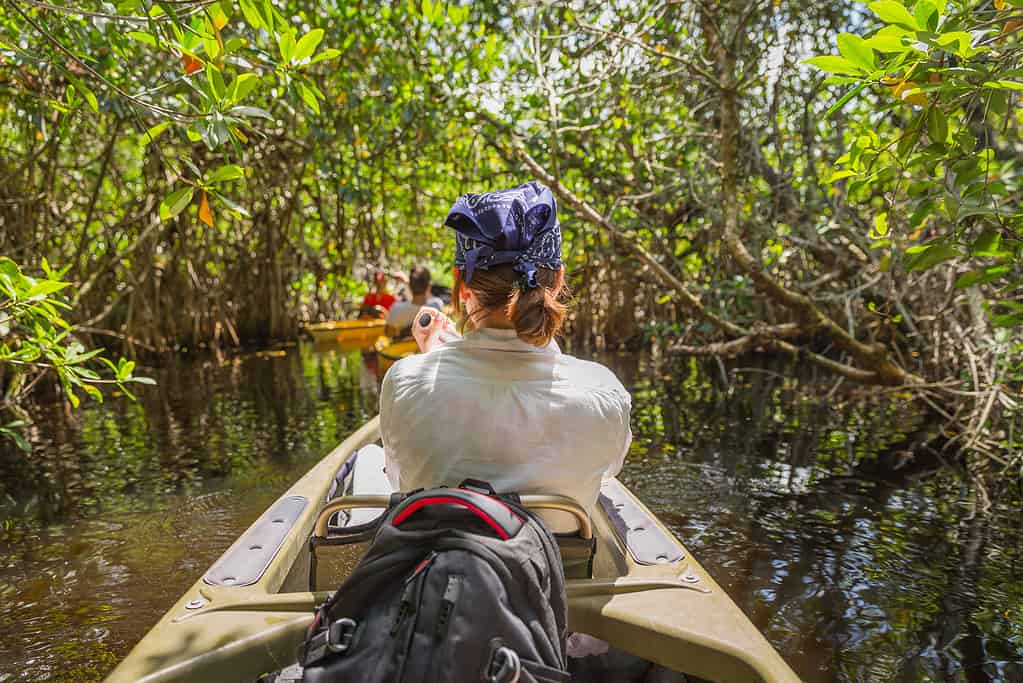
A great way to take in the beauty of the mangrove forest is by taking a kayak tour!
©Mariakray/iStock via Getty Images
One of the most well-known plants that live in the Everglades are the mangrove trees. Mangrove trees are beautiful, inter-connected trees that feel exceptionally tropical to explore! The park actually holds the record for the largest contiguous stretch of mangrove trees in the western hemisphere. These trees aren’t common around the world, as only a handful of countries are home to them!
The photo featured at the top of this post is © sjones68/ via Canva.com
Thank you for reading! Have some feedback for us? Contact the AZ Animals editorial team.







